The Golden Rule’s Continuing Witness against Nuclear Weapons
In 1958, the four-person crew of the ketch the Golden Rule attempted to sail into the Bikini Atoll nuclear testing area in the Marshall Islands in the Pacific to protest against the testing of nuclear weapons. Two crew members were Quaker. The U.S. Coast Guard intercepted the boat near Hawaii and arrested the crew members, who later went to prison. The owner of the yacht Phoenix of Hiroshima met the Golden Rule crew in Honolulu, and was inspired by their efforts; the following month, he decided to demonstrate his opposition to nuclear testing by sailing his vessel into the Bikini Atoll, leading to his arrest. The boats’ voyages generated media coverage and international conversations about the radioactive pollution the nuclear tests created, which was detectable even in mothers’ milk. Friends Journal published frequent updates about the Golden Rule in its pages throughout 1958. The public outcry, increased by the 1962 Cuban Missile Crisis, led to the 1963 Limited Test Ban Treaty.
After the Golden Rule was sold in late 1958, it changed owners a few times but eventually became dilapidated and in 2010 sank in a storm, ending up at the bottom of Humboldt Bay in Northern California. Nearby shipyard owner Leroy Zerlang raised the boat that same year and searched for someone to take on the restoration. Members of the nonprofit antiwar group Veterans for Peace responded to the call and by 2013 had mostly restored the vessel; in the fall of 2022, the boat and a new crew started a two-year educational journey through the United States’ Great Loop, which includes the Mississippi River, the Gulf of Mexico, and the stretch of the Atlantic Ocean along the East Coast. The vessel is about two-thirds of the way through its 11,000-mile voyage. Veterans for Peace has been sharing updates on the journey on the project’s website.
This past May, following the Golden Rule’s stop in Philadelphia, Pennsylvania, Friends Journal staff writer Sharlee DiMenichi interviewed Caroline Wildflower, a former crew member, and Helen Jaccard, project manager and current crew member. The conversations have been lightly edited.
Interview with Caroline Wildflower
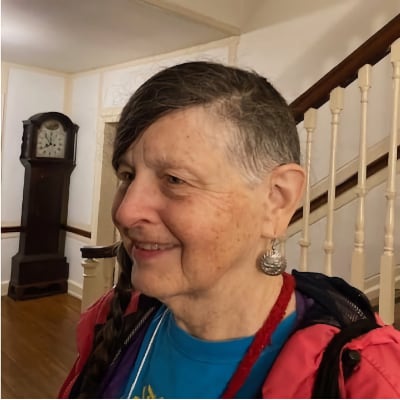
Caroline Wildflower (she/they) is a member of Port Townsend (Wash.) Meeting and was a crew member of the Golden Rule in 2016. Caroline’s parents were founding members of Kalamazoo (Mich.) Meeting when Caroline was seven years old.
Sharlee DiMenichi: What have been some of the biggest surprises you have encountered while sailing on the Golden Rule?
Caroline Wildflower: The Golden Rule has different captains as time goes on. And the captain while I was on the Golden Rule for 12 days as crew was Terry. I don’t remember his last name [Terry Lush], but he is a boat owner on Orcas Island. His family owned the Golden Rule some years after it was used to sail toward the nuclear test zone. (The Golden Rule was sold in 1958 when they finished their civil disobedience project.) Terry’s family owned that boat, and they sailed it mostly in the Caribbean. He happened to pick up a magazine, a boating magazine, that mentioned the Golden Rule and the fact that it was being rebuilt. And he looked at it and thought, That’s the boat my family owned. So he got in touch and said, could he be the captain sometime when it was coming up to the area where he lived?
He held a party at his yacht club for his friends, other boat owners. He brought in people to talk about nonviolent action and really do education about getting rid of nuclear weapons. And he wasn’t someone that was part of our movement at all before he made this connection with the fact that it was (laughing) the same boat.
I’m friends with Sally Willowbee, daughter of [original crew member] George Willoughby, and she told me about the boat as it was being rebuilt. She said, you could apply to be crew on the boat. And I thought, well, I don’t know anything about sailing a boat. I don’t think (laughing) I’d be able to do that. But we actually went and saw the boat in California. We visited the boatyard where it was rebuilt and met the people that had been involved. There was just this connection made for us. And I realized I could follow instructions to, you know, wind up the halyards—to do the really simple things for sailing a boat. And so I applied to be on crew, and I was accepted to be on crew.
During the 12 days I was on crew, we went to two boat shows and another place where all the boats gather that are going between the two shows. So we connected with a lot of boating people. And at the boat shows, I was telling everybody all my stories about—I mean, I read about the Golden Rule in 1958 when I was 11. At that time I thought, That’s what Quakers should be doing. I couldn’t figure out why Quakers weren’t in jail like the early Quakers. And I was telling people all the stories about the Golden Rule sailing toward the nuclear test zone and the Phoenix picking it up and sailing into the nuclear test zone after the Golden Rule crew was arrested. And I realized the real reason I was on the crew was to tell the stories, to do the education the boat was sailing for. The purpose of sailing the boat was to educate people, you know, sailing for abolishing nuclear weapons basically. And this boat was reaching people that—we often are talking to the same people that already agree that (laughing) we want to abolish nuclear weapons. So it was reaching people that might not have thought about that. The same people that Terry was reaching out to. And in Victoria, Canada, people were telling me stories I hadn’t heard—like that New Zealand sent a navy ship to Mururoa, where the French were testing bombs.
SD: What spiritual practices did you rely on to sustain you during the voyage?
CW: Well, for me, as a Quaker, I believe in following my leadings and trying to stay in touch with Spirit—I mean, it’s always here with us. So that’s one of the practices I brought with me onto the boat. And it was very important because you’re in a very constricted, small area with a specific group of people. And, you know, there can be a few conflicts that arise or struggles. Staying centered and in prayer mode is one of the things that is part of my spiritual practice. One thing I’ve been trying to do but don’t always manage is to have some moments of meditation first thing. Now, that usually didn’t work on the boat because we’d get up with the tides and move out. So I just have to stay in touch with it without specifically sitting down and meditating for 20 minutes. But, yeah, just to try and stay centered and in connection with Spirit.
SD: What do you most want the public to know about the current danger of nuclear war?
CW: We’re in more danger now than ever because of the number of nuclear weapons we have and the things that are going on with the Ukraine–Russia war. And that we really need to act to push for nuclear weapons to be dismantled and us to ratify the Treaty on the Prohibition of Nuclear Weapons (TPNW), saying that nuclear weapons are illegal. Since the U.S. has not ratified the TPNW, it’s not binding on the U.S. I’m a part of Ground Zero Center for Nonviolent Action, which shares a fence-line with a Trident submarine base in Bangor, Washington, and we’ve recently come up with this idea that we can get rid of nuclear weapons in stages. So there’s a bunch of nuclear weapons in the U.S. that are scheduled to be dismantled, but they haven’t been. What we’re really pushing for right at this moment is to get those things dismantled because, if they don’t get dismantled, and something changes somewhere, they might be brought back into hair trigger, ready to be used. So do that, and then there’s three more steps.
Once we get that taken care of, we’ll move to the next— you know, we’ll continue to do all the things we’ve been doing to say, yeah, we want them all abolished right now. But let’s at least get rid of those.
Here is a brief summary of former nuclear submarine commander Tom Rogers’s plan for total elimination of nuclear weapons [Rogers is an antinuclear activist and has been a member of Ground Zero Center for Nonviolent Action since 2004.]:
- U.S. unilaterally dismantle all retired, obsolete warheads
- U.S. and Russia negotiate elimination of all non-deployed warheads and launchers
- U.S. and Russia renegotiate the New START Treaty to lower stockpiles of deployed weapons to a minimum deterrent
- All nine nuclear weapons states enter into negotiations under Article 6 of the Non-Proliferation Treaty for the complete elimination of nuclear weapons under international control
There’s been a lot of actions over the years that have prevented a nuclear war from happening. We’re just incredibly lucky that people took different actions. And so whatever you can do to work on getting rid of nuclear weapons—pray for it, go do a sit-in somewhere—whatever you get called to do, do that and make sure you work on it.
SD: What concrete steps would you like Congress to take to reduce the likelihood of a nuclear war?
CW: If we could remove the whole fact that the president carries around this button that he or she could push to launch a nuclear attack—if we could get that undone, I think Congress would have the power to do so. Right now, there’s steps moving forward very quickly to get a whole new set of submarines, a whole new set of nuclear weapons—spending trillions of dollars . . . [I’d like Congress] to stop all of those things and pull back because we don’t need any of those things and start down the road of actually getting rid of the nuclear weapons.
SD: What do you see as the most important results of the UN Treaty on the Prohibition of Nuclear Weapons?
CW: I think that it gave us the chance to do more education. We had a million people in New York City saying, let’s get rid of nuclear weapons, some years ago. And then the next step [ratification by the United States] didn’t quite happen. I was a founding member of Ground Zero Center for Nonviolent Action 45 years ago. So we’ve put it on our banners. Nuclear weapons are illegal. We do ads in the newspaper about it. So it’s something that we can use for education at the very least. And I am very pleased that there have been steps around the world. [There are currently 92 signatories and 68 states parties for TPNW, according to the International Campaign to Abolish Nuclear Weapons (ICAN).]
SD: What else would you like to add?
CW: Let’s see. Well, I’m very glad that the Golden Rule got rebuilt and is sailing and has a story to tell and that it finally got to the East Coast, where there are still some people who remember the original journey. I have some very deep connections with the Golden Rule.
I was at Pendle Hill [Quaker conference center in Wallingford, Pennsylvania], and so I was telling them about it coming. And they—this whole crew of people, like nine of us, showed up to greet the Golden Rule as it was coming in [to Penn’s Landing in Philadelphia]. And it was our last day together. I was so honored that they saw how important it was to me. And then they were absolutely thrilled that they had a chance to greet it. But to put aside what we were doing the very last day in favor of taking that trip was really amazing.
And the other thing is that, personally, my husband, Clint Weimeister, died four years ago. [FJ published his milestone in the January 2020 issue.]
SD: Oh, I’m sorry.
CW: Yeah, pancreatic cancer. And so he—we knew. And I said, was there some last trip you’d like to take? And he said, well, I want to go to Hawaii and greet the Golden Rule when it comes in. He said that would be his 50th state. But the Golden Rule’s trip got delayed. And so he died before it went to Hawaii. Helen Jaccard contacted me and said, do you want to send his ashes on the boat? So I did. I put some of his ashes in a dry bag, and sent them to Helen. And then my friend Tom Rogers comes back into this story. He’s the one who came up with this four-part system of getting rid of nuclear weapons; he also used to be a submarine captain in the Navy. He was on the crew. And so these ashes traveled under his bunk. I asked the crew to scatter the ashes in Hawaii and they did. So Clint got his 50th state.
Interview with Helen Jaccard
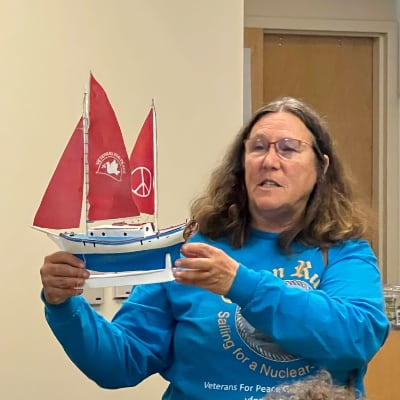
Helen Jaccard is a crew member and project manager for the Veterans for Peace Golden Rule Project. She feels immense gratitude for the thousands of volunteers who made the refurbishment and current voyage possible. Jaccard does not have a Quaker affiliation but loves Quakers’ commitment to pacifism.
Sharlee DiMenichi: How did you first hear of the Golden Rule?
Helen Jaccard: I was at a Veterans for Peace regional conference in Northern California, where the Golden Rule was being rebuilt. And at the time, my partner and I were living in an RV. And we chose to go see her. And she looked pretty much like a wreck—two big holes in her side, not in good shape. They hadn’t started the rebuild yet. And then we went to another one of those conferences and visited again in 2013, and she was looking a lot better. Then in 2015 was when the call went out to finish the Golden Rule. And that’s when we moved our RV into the boatyard to help them finish her.
People are volunteering to crew the boat and set up the events, do the outreach for the events, including media. And we have a bookkeeper that does a lot of the, you know, other administrative duties. My partner, who was in the RV at the time with me that we moved into the boatyard, now is my husband, and he does a lot of the writing and speaking. So there’s a whole lot of people involved. There’s a lot of journalists who have written articles. So it’s—there have been over the years literally thousands of people that have helped out with this project.
It’s been a real pleasure to see people from so many different Quaker meetings along the route. And right here in Philadelphia where I am right now, you know, when I go to one of the public events or Quaker events here, all I have to do is shout out, which Quaker meeting are you from? And I get ten different answers. It’s so cool.
Although we’re a project of Veterans for Peace, we can’t ask them for much financially. And it’s a struggle just keeping the boat afloat. Boats are not cheap, as you probably know. And so the main way that we get our money is through passing the hat at events.
SD: What spiritual practices do you rely on to sustain your work?
HJ: I engage in giving myself hope through taking action to stop the possibility of nuclear war. And I help other people to have that hope, knowing that people are working on this issue and that they too can have more hope if they believe that disarmament is possible and that they too can work, if they want to spend time on this particular issue, to help nuclear matters come to an end.
SD: What do you most want the public to know about the current threat of nuclear war?
HJ: Well, I would like people to understand that even 100 nuclear weapons could produce a nuclear autumn that would starve, because of crop failure, two billion people. [There are currently about 12,700 nuclear weapons in the world, held by nine countries, according to ICAN.] And I want people to know that most of the countries involved with nuclear weapons, or that own nuclear weapons, have said that a nuclear war cannot be won and must never be fought. I think they understand the existential threat of this. Right now, there’s an urgency involved with ending the Ukraine war before it turns nuclear. There’s also an urgency in stopping the spending of $2 trillion on new nuclear weapons because we urgently need that money for addressing climate change and human needs.
SD: What concrete steps would you like Congress to take to reduce the danger of nuclear war?
HJ: Ultimately, I would like them to ratify the United Nations Treaty on the Prohibition of Nuclear Weapons. I would also like them to implement the measures that are talked about in House Resolution 77, which is to take away the president’s sole authority to launch a nuclear strike; to end the $2-trillion nuclear weapons modernization program; to declare a No First Use policy; and to take all of the nuclear weapons off of hair trigger alert. There’s other things, though, that I think are important that—well, there’s the Eleanor Holmes Norton bill that she’s introduced many times: the Nuclear Weapons Abolition and Economic and Energy Conversion Act [H.R. 2850].
And so, right now, you just have those two bills in the House. And I don’t think there’s any Senate companion bills. People can certainly advocate for these measures. I think that the administration also needs to take a look at their nuclear posture. Veterans for Peace has written a nuclear posture review of their own. And the nuclear posture review written by the Biden administration is very aggressive and talks about nuclear weapons as the cornerstone of their security policy.
And, you know, what kind of security is that, right? The threat of nuclear weapons is a bully stick, and we need to stop doing that because threatening other countries with nuclear weapons means they’re more likely to develop them and potentially even use them. So we need to just stop doing that. Instead, what we need is negotiations and treaties.
So, for example, there was a framework for nuclear disarmament with North Korea back in 1994. They did eliminate their nuclear weapons program. In exchange, the United States was to provide them with food and energy and security guarantees that they would stop trying to overthrow the North Korean government. The United States broke all of those promises, and then North Korea restarted their nuclear weapons program.
There was the Minsk agreements between Russia and Ukraine. Those could be re-implemented, or they could be implemented as part of the negotiations to end the war in Ukraine. The negotiations need to be backed up by the United States and Europe in order to be successful because it’s really NATO and the United States that are behind continuing this war.
The United States needs to remove all of its nuclear weapons from Europe. We have nuclear weapons in five European countries, and that’s in direct violation of the Nuclear Non-Proliferation Treaty. So when Russia talks about putting nuclear weapons in Belarus, well, you know, we’ve already violated that. And so we have no reason to be upset. They’re just doing the same thing we did. So I think we need to make that clear.
I think that surrounding China and Russia with U.S. and NATO military bases is very dangerous, and it makes them feel insecure enough that they may need to start threatening the United States with nuclear war. And so our whole culture of war needs to change.
SD: Do you have a Quaker affiliation?
HJ: No. I just really love Quakers and Quakerism. I love the pacifist nature. And I love the form of governance as I see it. I love that the small voices are heard, that decisions take time.
SD: Thank you. It has been a pleasure to talk with you.
HJ: Thanks, Sharlee.


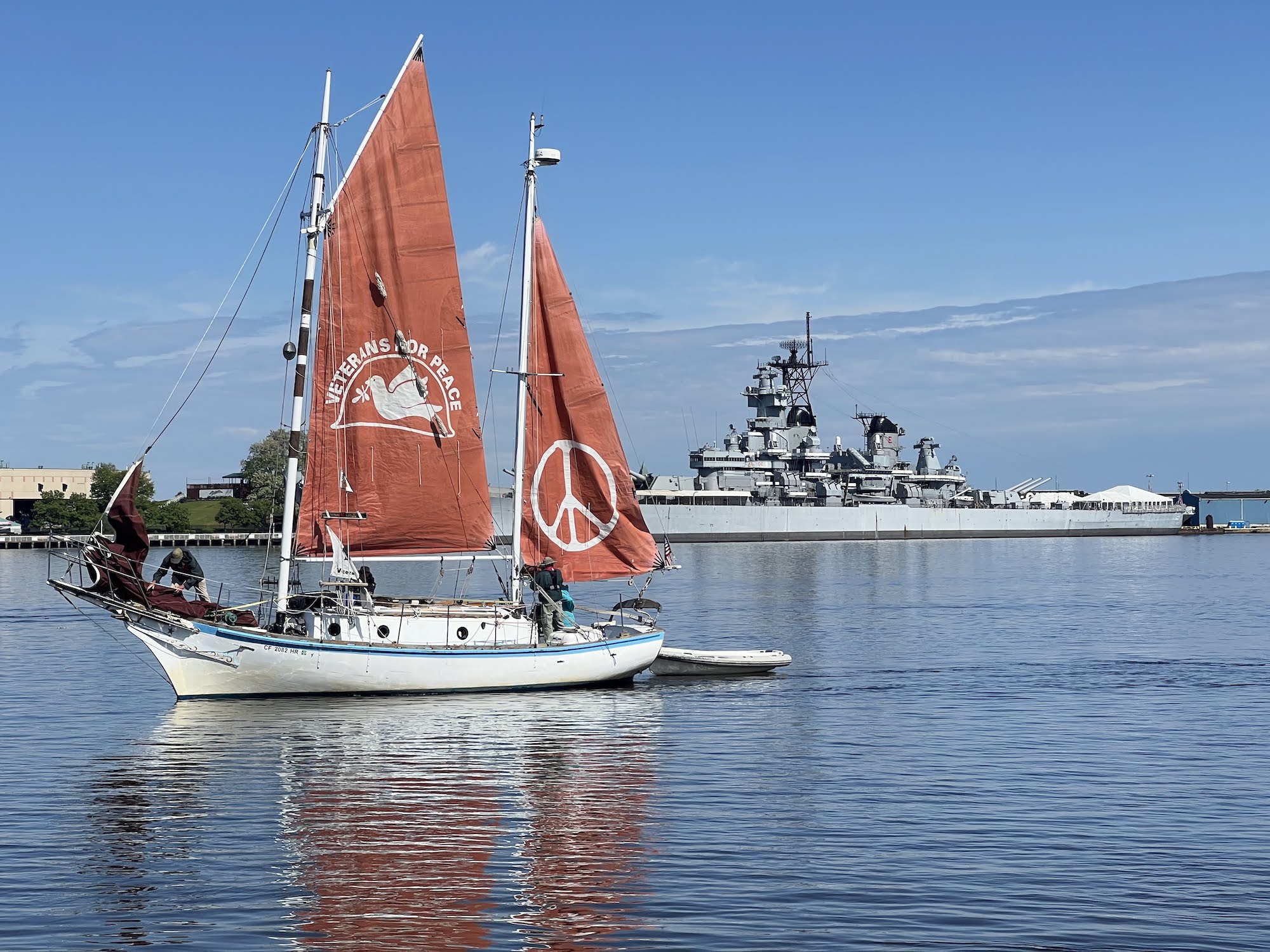
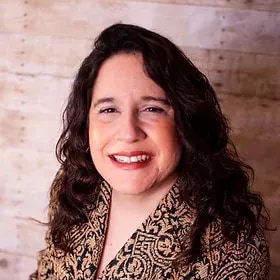
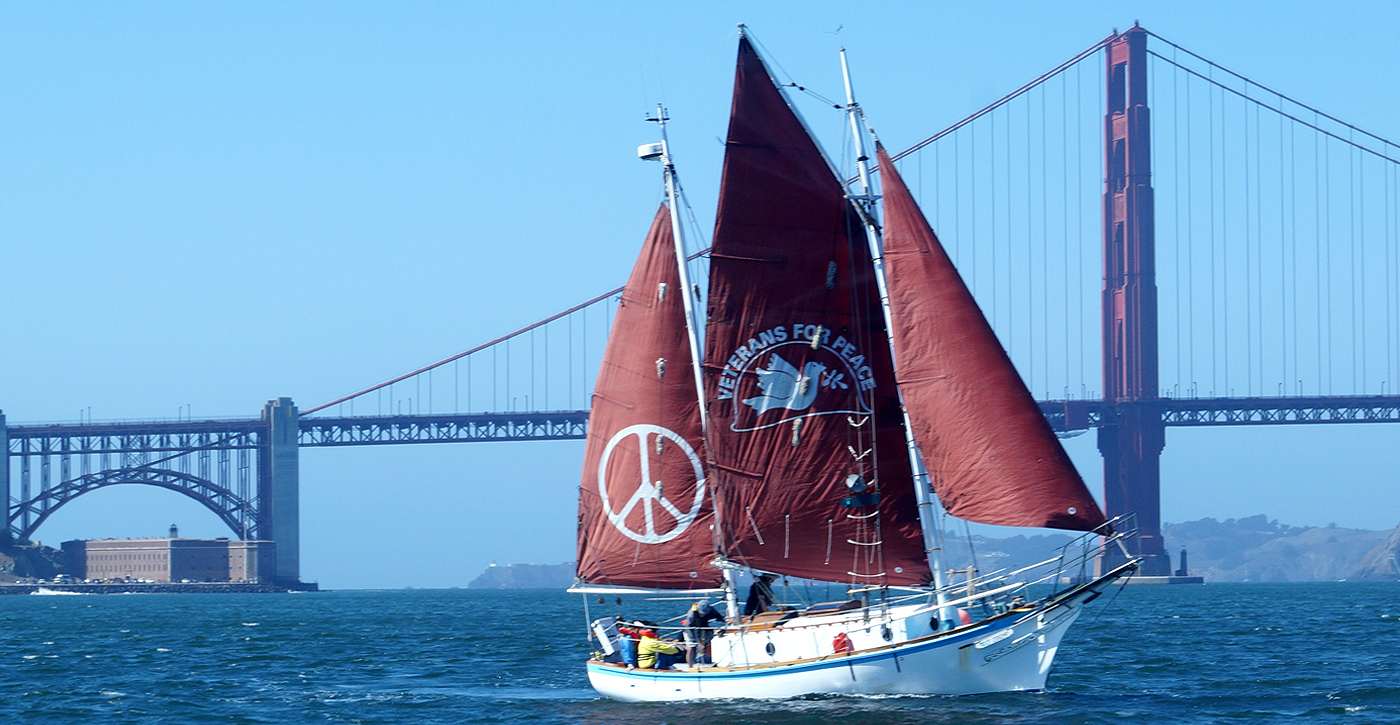
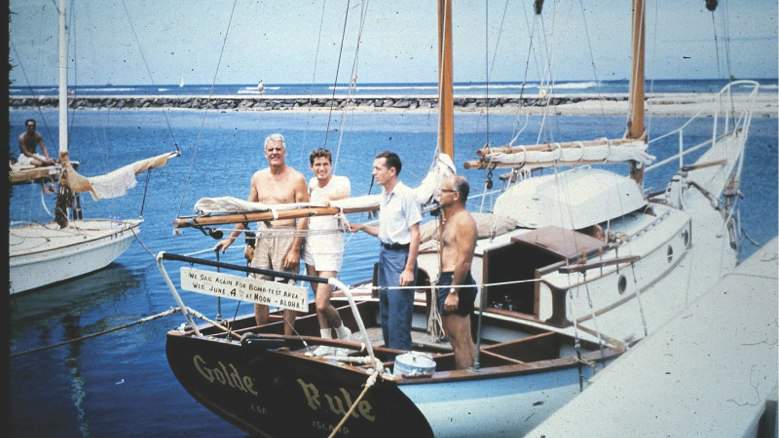
Comments on Friendsjournal.org may be used in the Forum of the print magazine and may be edited for length and clarity.